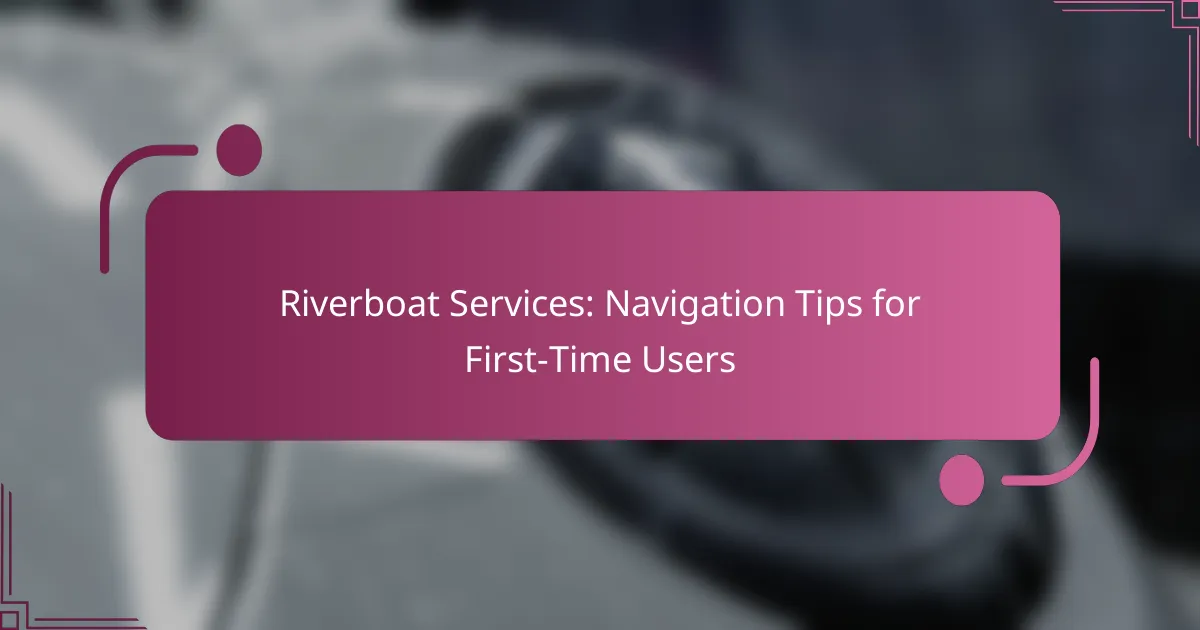Embarking on a riverboat adventure for the first time can be an exciting yet daunting experience. To ensure a smooth journey, it’s crucial to select the right service—whether it’s a local rental, guided tour, or private charter—based on your comfort level and preferences. Familiarizing yourself with navigation tools and river maps will further enhance your experience, helping you navigate potential obstacles with confidence.

What Are the Best Riverboat Services for First-Time Users?
For first-time users, the best riverboat services typically include local rentals, guided tours, and private charters. Each option offers unique experiences and varying levels of support, making it essential to choose based on your preferences and comfort with navigation.
Local Riverboat Rentals
Local riverboat rentals allow users to explore waterways at their own pace. These services usually provide a range of boat types, from small canoes to larger motorboats, catering to different skill levels and group sizes.
When renting, consider factors such as rental duration, pricing (often ranging from $20 to $100 per hour), and any required permits. It’s advisable to book in advance during peak seasons to ensure availability.
Guided Riverboat Tours
Guided riverboat tours are ideal for those seeking a structured experience with expert insights. These tours often include knowledgeable guides who share information about local history, wildlife, and landmarks.
Prices for guided tours can vary widely, typically ranging from $30 to $150 per person, depending on the length and inclusions, such as meals or equipment. Look for reviews and ratings to choose a reputable service.
Private Charter Services
Private charter services offer a personalized experience, allowing groups to customize their itinerary. This option is perfect for special occasions or private gatherings, providing exclusive access to the boat and crew.
Costs for private charters can be higher, often starting at around $300 for a few hours, depending on the boat size and amenities. Be sure to clarify what is included in the price, such as catering or additional activities, to avoid unexpected expenses.
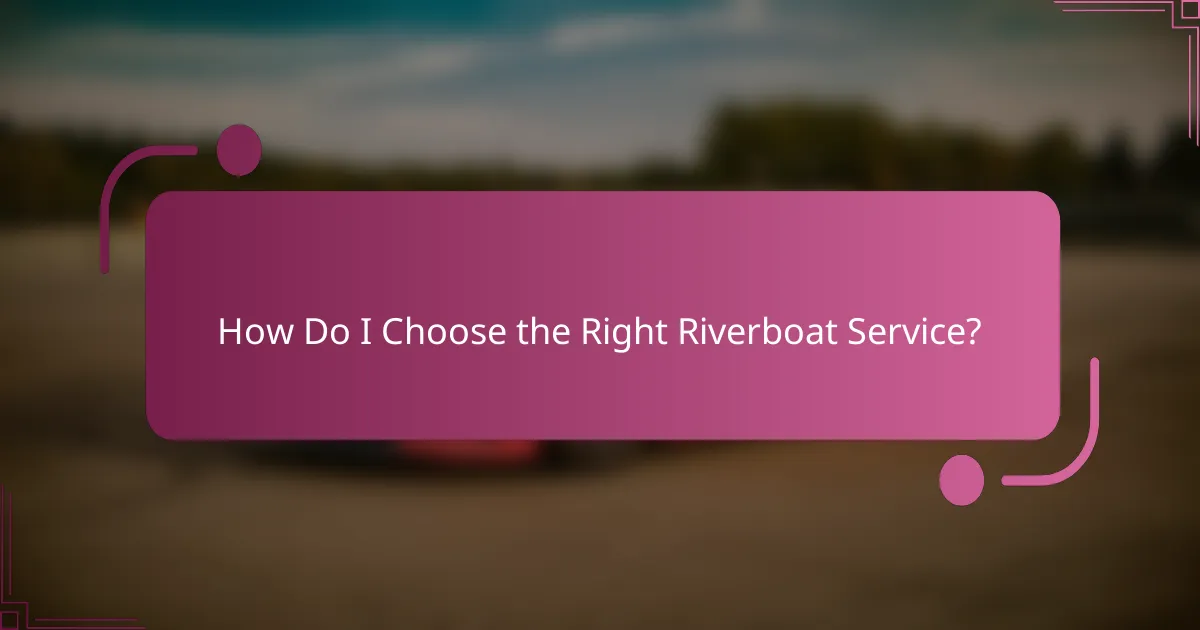
How Do I Choose the Right Riverboat Service?
Choosing the right riverboat service involves assessing your specific needs, such as the service area, customer feedback, and pricing options. By carefully evaluating these factors, you can ensure a pleasant and efficient experience on the water.
Consider Service Area
When selecting a riverboat service, first identify the areas they operate in. Different services may cover various regions, so ensure the provider you choose can navigate the specific waterways you plan to explore.
Check if the service offers routes that align with your travel plans. Some riverboat services might focus on popular tourist destinations, while others may provide access to more remote locations. Understanding their service area will help you avoid unnecessary detours.
Evaluate Customer Reviews
Customer reviews are invaluable when choosing a riverboat service. Look for feedback on aspects such as reliability, cleanliness, and crew professionalism. Platforms like Google Reviews or TripAdvisor can provide insights from previous passengers.
Pay attention to both positive and negative reviews to get a balanced view. A service with consistently high ratings is likely to offer a better experience, while a pattern of complaints may indicate potential issues.
Check Pricing Options
Pricing can vary significantly among riverboat services, so it’s essential to compare options. Some services may charge per trip, while others offer packages that include meals or guided tours. Be sure to understand what is included in the price.
Consider your budget and the value of the services offered. Sometimes, a slightly higher price may provide additional amenities or a more enjoyable experience. Look for any hidden fees, such as docking charges or extra costs for onboard activities, to avoid surprises.
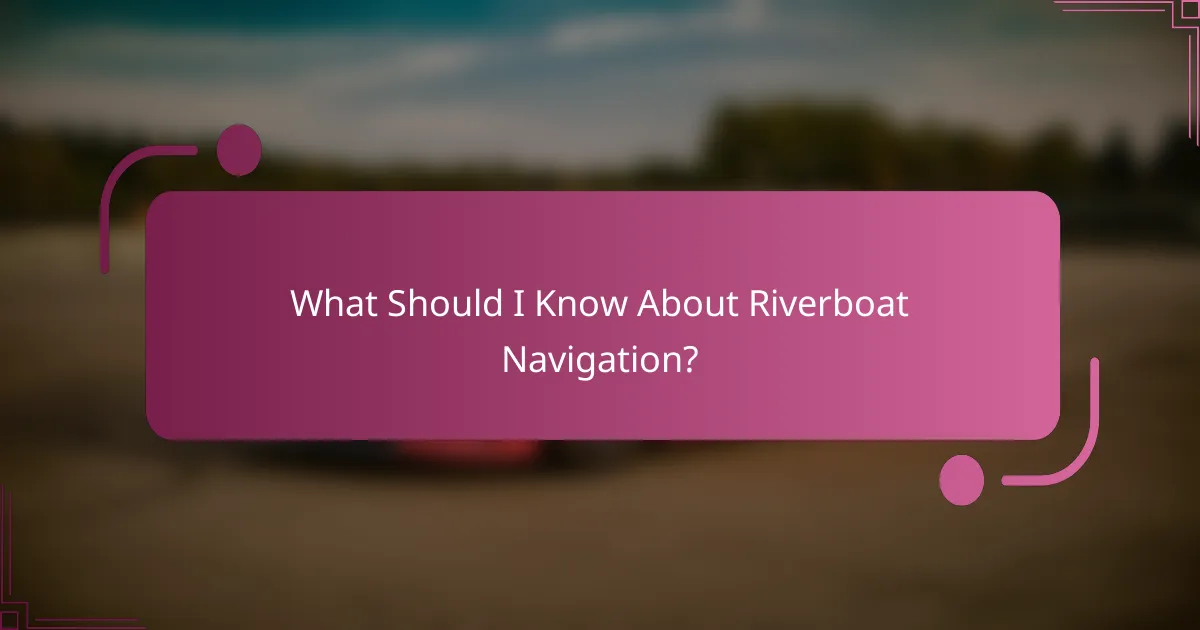
What Should I Know About Riverboat Navigation?
Riverboat navigation involves understanding waterways, using navigation tools, and recognizing potential obstacles. First-time users should familiarize themselves with river maps, essential navigation tools, and common challenges to ensure a safe and enjoyable experience.
Understanding River Maps
River maps are essential for navigating waterways, providing information on depth, currents, and landmarks. Familiarize yourself with the symbols and scales used on these maps to interpret the information accurately.
Look for features such as navigational aids, potential hazards, and points of interest. Many maps also indicate safe docking areas and fuel stations, which can be crucial for planning your journey.
Key Navigation Tools
Effective navigation requires a combination of tools, including GPS devices, compasses, and traditional maps. GPS devices can provide real-time positioning and route guidance, while compasses help maintain your heading.
Consider using a smartphone app designed for river navigation, which can offer additional features like weather updates and community-reported hazards. Always have a backup method, such as a physical map, in case of technology failure.
Common River Obstacles
When navigating rivers, be aware of common obstacles such as submerged rocks, fallen trees, and strong currents. These hazards can vary by season, so check local conditions before setting out.
It’s advisable to maintain a safe distance from the riverbank to avoid shallow areas and debris. Additionally, always keep an eye out for other vessels and be prepared to adjust your course as needed to ensure safety.
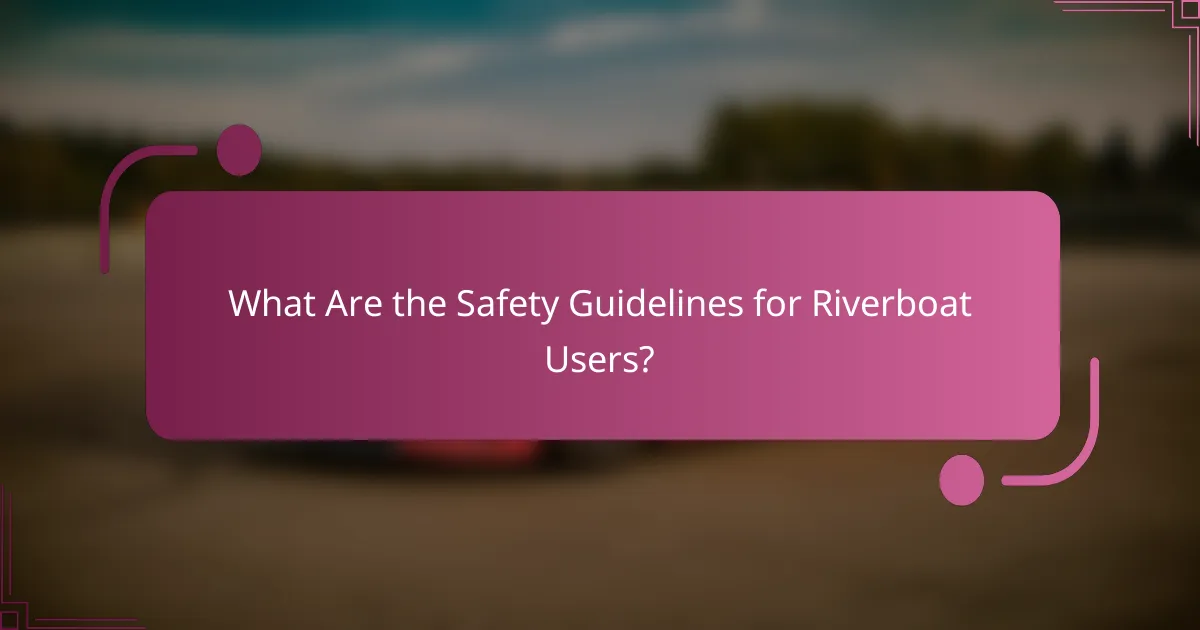
What Are the Safety Guidelines for Riverboat Users?
Safety guidelines for riverboat users are essential to ensure a secure and enjoyable experience on the water. Familiarizing yourself with these guidelines can help prevent accidents and enhance your overall trip.
Life Jacket Requirements
Wearing a life jacket is a critical safety measure for all riverboat users. Regulations typically require that all passengers have access to a properly fitting life jacket, and children often must wear one at all times. Ensure that the life jackets are Coast Guard-approved and in good condition.
Before setting off, check the number of life jackets available against the number of passengers. A good rule of thumb is to have at least one life jacket per person, plus an extra for emergencies.
Emergency Procedures
Understanding emergency procedures is vital for riverboat safety. Familiarize yourself with the boat’s emergency exits, signaling devices, and communication tools. In case of an emergency, remain calm and follow the captain’s instructions.
It’s advisable to conduct a safety briefing before departure, covering key actions such as how to use life jackets, where to find first aid kits, and how to signal for help. Practicing these procedures can save valuable time during an actual emergency.
Weather Considerations
Weather conditions can significantly impact riverboat safety. Always check the forecast before your trip, as sudden storms or high winds can create hazardous conditions. It’s best to avoid boating during severe weather warnings.
Pay attention to local weather patterns and be prepared to adjust your plans accordingly. If conditions worsen while on the water, seek safe harbor immediately and wait for the weather to improve before continuing your journey.

How Do I Prepare for My First Riverboat Experience?
Preparing for your first riverboat experience involves understanding what to bring, how to book your trip, and the best times to travel. By planning ahead, you can ensure a smooth and enjoyable journey on the water.
Essential Packing List
Your packing list should include items that enhance comfort and convenience. Essentials typically include weather-appropriate clothing, comfortable shoes, a hat, sunscreen, and insect repellent. Don’t forget your camera to capture the scenic views along the river.
Consider bringing a small backpack for day trips, along with any personal items like medications or travel documents. If you plan to enjoy meals on board, check if the riverboat allows snacks or beverages to be brought along.
Booking Tips
When booking your riverboat trip, compare different services to find the best fit for your needs. Look for reviews and ratings to gauge the quality of the experience. Booking in advance can often secure better rates and availability, especially during peak seasons.
Be aware of cancellation policies and any additional fees that may apply. Some riverboat services offer package deals that include meals and excursions, which can provide good value for your money.
Timing Your Trip
Choosing the right time for your riverboat experience can significantly impact your enjoyment. Peak seasons, typically during summer months, can be crowded but offer the best weather. Off-peak times may provide a quieter experience, often at lower prices.
Consider local events or festivals that might coincide with your trip, as these can enhance your experience but may also affect availability and pricing. Early morning or late afternoon departures can offer stunning views and a more relaxed atmosphere on board.
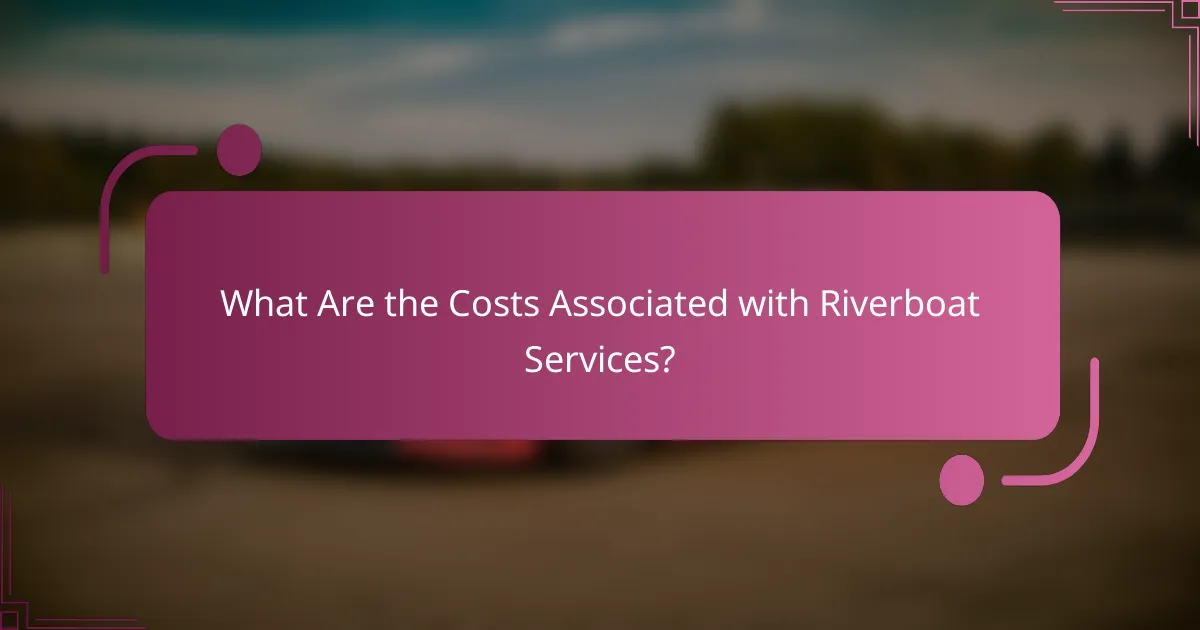
What Are the Costs Associated with Riverboat Services?
The costs associated with riverboat services can vary significantly based on factors such as location, type of service, and duration of rental. Generally, users should consider rental fees, fuel costs, and any additional charges for amenities or services.
Rental Fees
Rental fees for riverboat services typically range from low tens to several hundreds of dollars per hour, depending on the size and type of the boat. Smaller, basic boats will generally cost less, while larger, luxury vessels can command higher rates.
When renting a riverboat, it’s essential to check what is included in the rental fee. Some services may offer packages that include fuel, safety equipment, and even a captain, while others may charge extra for these essentials. Always clarify the terms before finalizing your booking.
Additionally, consider the peak seasons for riverboat rentals, as prices may increase during holidays or summer months. Booking in advance can often lead to better rates and availability.
